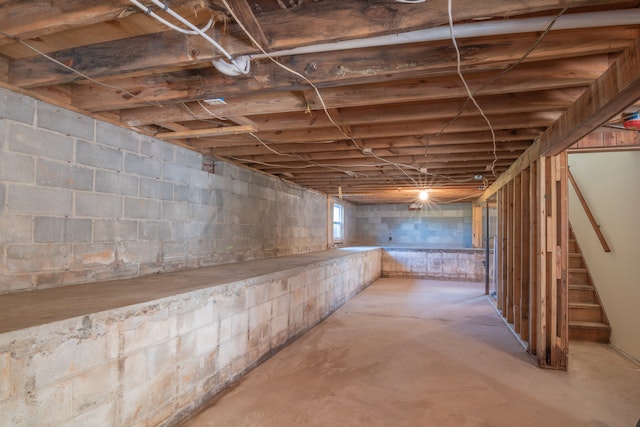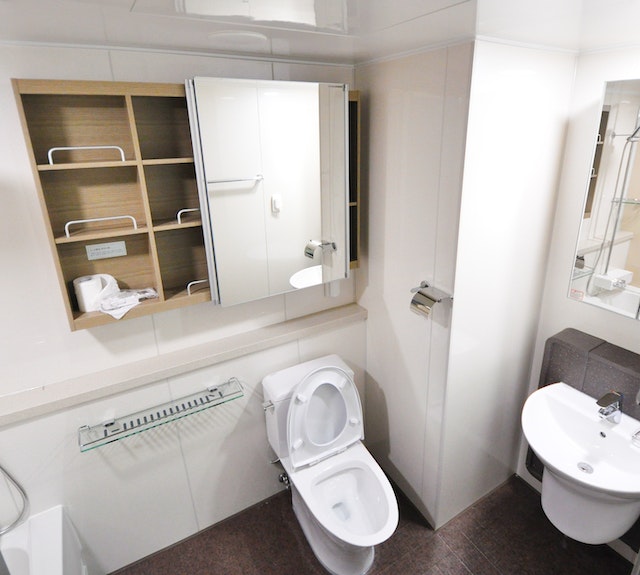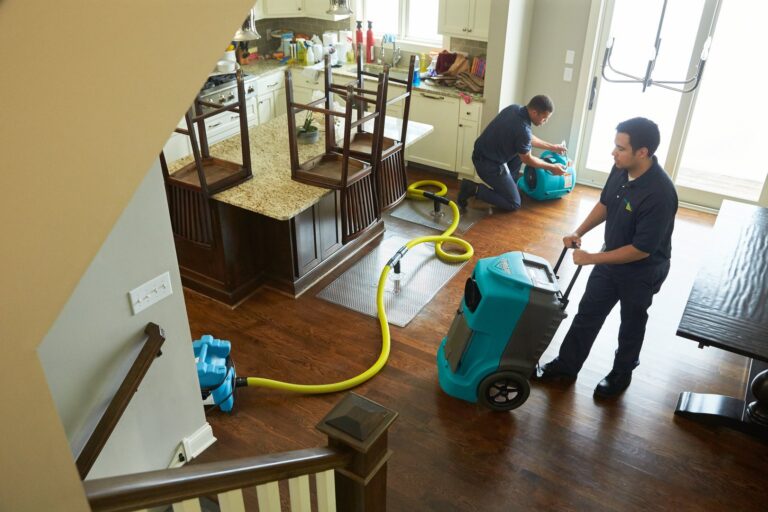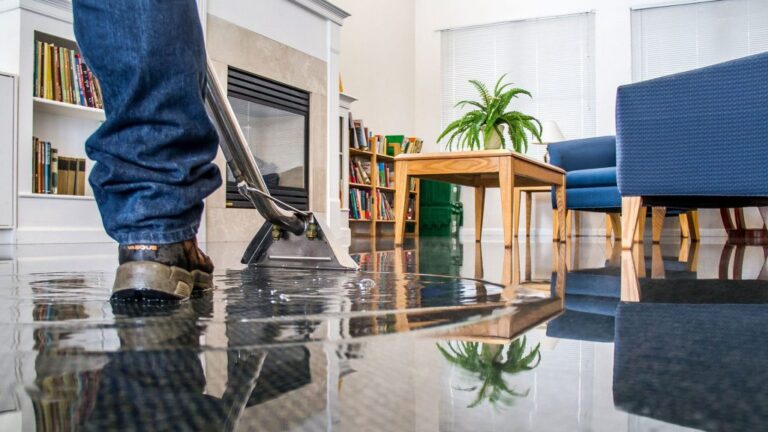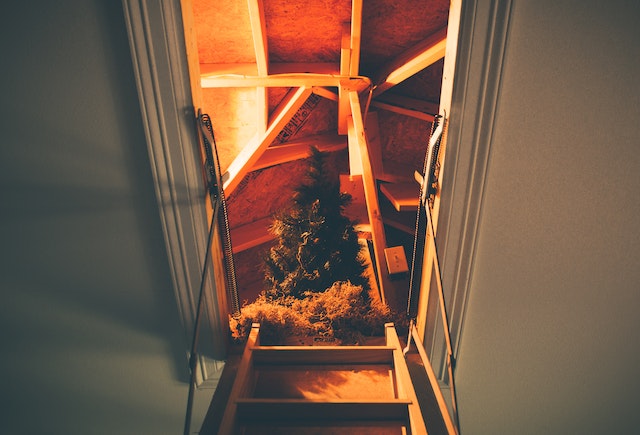Basements are well-known for their risk of flooding. Learning what to do when your basement floods can help you minimize the damage and avoid the dangers of mold growth. In this article, we’ll review what steps to take after your basement floods, including how to handle mold growth. We’ll also review a few tips to help you prevent your basement from flooding.
What To Do When Your Basement Floods
Time is of the essence when dealing with a flooded basement. Here are a few steps to take after experiencing a flooded basement:
Stop The Source of the Water
One of the first things to do when dealing with a flooded basement is to turn off the water. Act quickly to minimize the amount of flood damage.
You may also have to turn off the gas or electricity. If the flood waters affect the basement’s outlets or other electrical components, it could become an electrocution hazard.
You can turn off your home’s water supply at the main shutoff valve. Use the electrical panel box to turn off the associated circuit breaker. You can also turn off the main circuit breaker to turn off the power supply to the whole home before attempting a basement flooding repair.
Call In the Professionals
The sooner you call a professional remediation company to deal with a flooded basement, the better. Most times, basement flooding requires a professional’s specialized skills and tools.
Ideally, you should never enter a flooded area unless you’re experienced and take steps to avoid health issues. Ensure you never enter a flooded room with the power still on, especially if electrical items are present.
You’ll likely need a licensed contractor or plumber to avoid further damage. All of the damaged drywall will need to be removed. You may also need to immediately contact a qualified electrician to remove electrical items from the room.
Once all repairs are made, you can begin the water removal process. If the water has been sitting for more than 24 hours, you’ll likely need a mold remediation company to remove mold.
The great thing about contacting a water restoration company at the first indication of a flooded basement is that they can assist you in collecting quotes for all required contractors.
Assess the Damage
Once it’s safe to do so, assess the damage, including the source of the water. The cause of the flooded basement may be obvious, especially if the flooded area is limited to a certain part of the room. You may also notice a burst pipe. Murky or smelly water could indicate a sewer backup.
This is also a good time to consider your DIY skills and whether or not you’ll need a professional to complete the basement flooding repair. If your basement is flooded and you can’t locate the source, you may need a professional.
Call Your Insurance Company
Whether or not your home insurance company covers basement flooding depends on its cause. Insurance companies may not cover a basement water repairs due to a natural disaster or backed-up groundwater unless you have a separate flood insurance policy.
However, homeowners insurance usually covers basement flooding repair from a burst pipe or sewage backup. Most insurance policies also cover broken appliances unless the basement is flooded from a lack of maintenance.
Work with your water restoration company to take photographs of the damage. Your home insurance company will likely require ample proof of the flooded area. Additionally, you’ll want to file a claim as soon as possible.
Pump the Standing Water Out of the Basement Using a Sump Pump
Most homeowners should leave the drying process to a professional water restoration company. Others, however, may want to begin removing standing water using a sump pump to prevent mold while they await professional services.
If you have more than an inch of water in the basement, you may need to pump the water out. Use a wet/dry vacuum to begin removing the water. It’s important to remember that the water in a basement is often sewage water that contains a lot of bacteria.
You’ll also need protective clothing and gloves to enter the basement. Depending on the water’s depth, you may also need to wear boots and chest waders.
You should also set up fans and dehumidifiers to thoroughly air out the room. Continue drying the basement via air circulation to help prevent bacteria. If the weather permits, open the windows to promote additional airflow and ensure it can reach all walls in the basement.
Clean Salvageable Items and Remove Damaged Ones
You can begin going through your personal belongings once you drain most of the water from the basement, or you can wait for the restoration company to assist. This includes moving important belongings to a dry area away from damaged walls.
Properly dispose of all damaged items, including drywall, flooring, and personal belongings. Completely dry and sanitize each item you plan to keep and place it in a well-ventilated area. Porous items, like wood or furniture, may need to be thrown out. Most items in cardboard boxes will also need to be disposed of.
Removing damaged items also means cutting out all damaged drywall and wet carpet in the basement. These items can easily grow mold after a flood. Water from a flood can also seep into your walls, floorboards, and baseboards.
Should You Call a Professional for Help With Your Basement?
After basement flooding, it’s usually a good idea to call in a professional as soon as possible. A water damage remediation company can bring in all the necessary equipment, such as sump pumps and cleaners, to dry out your basement as quickly as possible.
Prompt services can also help avoid fungus and bacteria growth, leading to a much more timely and less expensive repair project. One of the biggest benefits of a professional remediation company is that an experienced company can help you salvage more of your belongings.
A professional can also help you with your homeowners or flood insurance claim. Homeowners insurance isn’t always easy to work with, and having a professional on your side can be beneficial.
How To Clean Following a Basement Flood
Mold is a real possibility when dealing with basement flooding. Mold can grow on the walls, underneath the floors, and even on your furniture. Removing standing water with a shop vac is the first step to remediating flooding and preventing mold.
Cleaning, sanitizing, and deodorizing are also all essential steps. Moisture in a basement can easily lead to mold if it’s not fully dried up and removed within 24 hours. As soon as it grows, you must replace all affected parts.
Effectively getting rid of all traces of mildew and mold following a flood typically requires the services of a professional remediation company.
Common Causes of Flooding
Some of the most common causes of floods in the basement include:
Weather
Heavy rain or melting snow can cause pipes to burst. Excess water outdoors can also cause leaking into the basement. Too much water sitting near the property often causes hydrostatic stress, which may weaken the foundation.
The location of your home may also influence your risk of basement flooding. Homes located near water sources or positioned below the water level have a much higher risk of taking on water. Certain cities and states are also more prone to weather conditions that can increase your chances of a flood.
Plumbing Leaks
Burst pipes from clogged toilets or laundry tubs can also lead to a backed-up water. Trees positioned too near the home’s foundation can also cause roots to grow into the home’s plumbing system.
Clogged Gutters
Clogged gutters make it difficult for water to flow from the roof to the ground effectively. Instead, rain or snow can drain into the walls or basement windows.
How To Prevent Flooding in the Future
There are a number of things that you can do to prevent basement floods in the future, including:
Check Gutters and Downspouts
If clogged, your home’s gutters and downspouts can cause water to flow into the basement. Frequently checking and clearing your gutters and downspouts can help you avoid a hazardous basement flood.
Check your Basement Floor Drain
A properly installed basement floor drain is important for getting rid of water. If you notice any water pooling around the floor downspouts, it may have a minimal leak that needs to be repaired.
Check for Foundation Cracks
Repairing foundation cracks is a must to prevent a flood. Small cracks or leaks in the foundation near the home allow water to flow into the basement.
Seal Basement Windows
Improperly installed windows can lead to water coming indoors. Keeping window screens in place is usually a good idea, especially during inclement weather.
Be Prepared
Because prompt water removal is crucial following a flood, having the necessary tools on hand can be helpful. Make sure you have easy access to a sump pump and cleaning materials. Be ready to contact your insurance company and a professional remediation company for your basement repair needs.
How Much Does It Cost to Fix a Flooded Basement?
The average cost to fix a flooded basement varies, depending on the amount of water damage, the size of the basement, and the cost of repairs. On average, homeowners will pay around $4,300 for a basement flooding repair.
Whether or not you have access to the necessary equipment, like a sump pump, can also affect how much you pay. Homeowners insurance may cover some of the costs of cleaning up the water damage but doesn’t typically cover the cost of repairs.
Flooded Basement? Contact a Professional Today
Is your Tennessee basement flooded? Timely repairs and water remediation are a must. Contacting a professional to get into the basement, make all necessary repairs, and remove standing water can help to minimize your damages and costs. If you live in Nashville, Tennessee, and are dealing with a flooded basement, one of the first phone calls you should make is to Nashville Water Damage Restoration.

